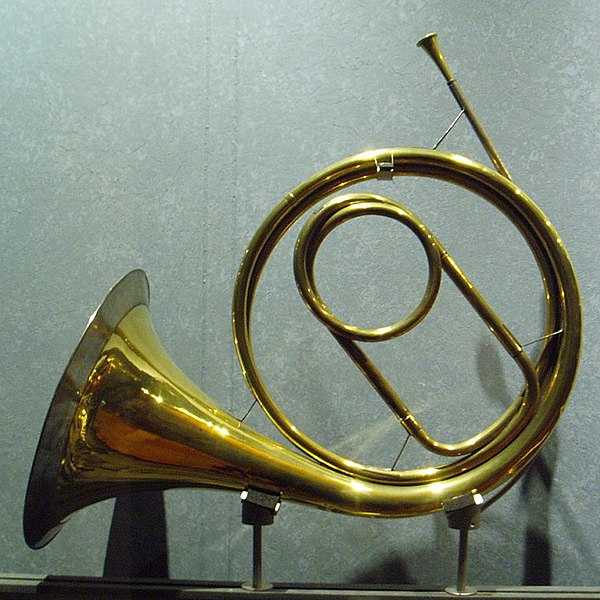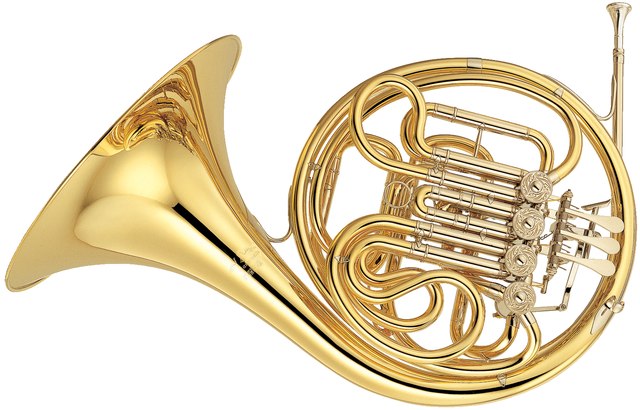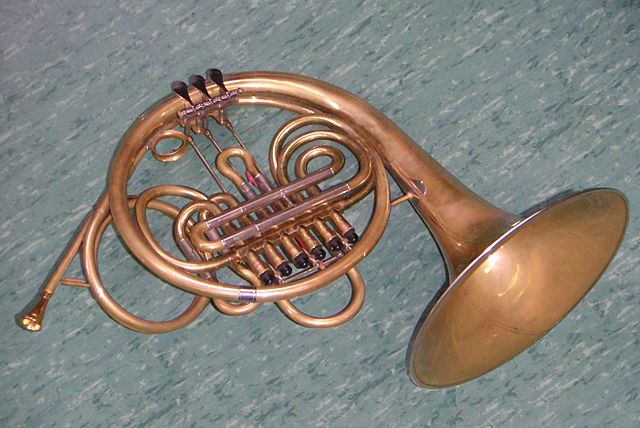The natural horn is a musical instrument that is the predecessor to the modern-day (French) horn. Throughout the seventeenth and eighteenth century the natural horn evolved as a separation from the trumpet by widening the bell and lengthening the tubes. It consists of a mouthpiece, long coiled tubing, and a large flared bell. This instrument was used extensively until the emergence of the valved horn in the early 19th century.
Natural horn in the V&A Museum, London
A natural horn in heraldry, crest of Gerardus Rubens.
"Cor Solo" (natural horn) – Raoux, Paris, 1797
The French horn is a brass instrument made of tubing wrapped into a coil with a flared bell. The double horn in F/B♭ is the horn most often used by players in professional orchestras and bands, although the descant and triple horn have become increasingly popular. A musician who plays a horn is known as a horn player or hornist.
A modern double horn
The valves of a Conn 6D double horn. The three lever keys (above the large valves) can be depressed toward the large outer tube. The thumb key (near the left-most valve) moves inward toward the three finger keys.
A natural horn has no valves, but can be tuned to a different key by inserting different tubing, as during a rest period.
Vienna horn






